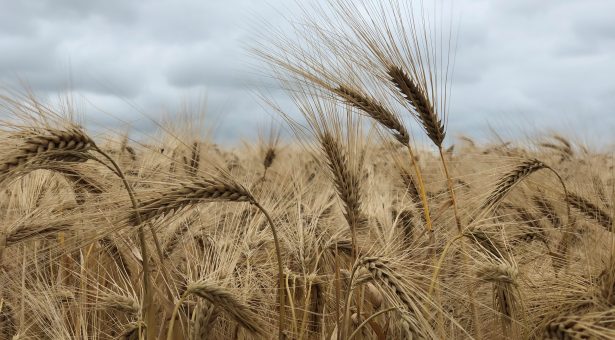
Genes which confer resistance to the deadly fungal disease stem rust have been successfully transferred from wheat into barley.
In an advance which could lead to wider use of resistance genes from other wild relatives of elite crops, the John Innes Centre team used genetic modification (GM) techniques to fortify barley plants with genes proven to have defensive activity in wheat.
The research is seen by researchers as a model for future efforts to protect crops against the growing threat of virulent fungal pathogens.
In contrast to wheat where 82 stem rust resistance genes have been found, only 10 have been discovered in barley.
Research efforts to transfer this genetic resistance from one commercially valuable member of the grass family to the other using traditional crossing have proved unsuccessful.
In this experiment researchers in the group of Dr Brande Wulff used transgenic barley plants to test the functionality of four cloned stem rust genes from wheat. This study which appears in the Plant Biotechnology journal revealed that the transgenic barley plants appeared more resistant to stem rust than barley plants with endogenous resistance genes which have evolved within the crop.
"We have shown that wheat stem rust resistance genes work in barley which is something that has not been achieved by wide crosses between grass relatives. Given that we now know that wheat resistance genes work in barley it is likely that barley resistance will also work in wheat which is a much bigger and more important crop. This might therefore expand the reservoir of resistance genes available to wheat for engineering resistance to its major diseases," says Dr Asyraf Hatta first author of the study.
By exploiting resources not available through traditional breeding, says corresponding author Dr Brande Wulff, the study is a clear signal to policy makers of the need to use modern precision breeding techniques such as GM and gene editing in the field of crop protection.
"This will offer more control over how such resistance genes are deployed including ensuring that they are deployed in stacks that maximise the durability of this precious genetic resource," he said.
In the last 20 years stem rust caused by the fungus Puccinia graminis has re-emerged as a major threat to wheat and barley production in Africa, Europe and parts of the Middle East.
The domestication of wheat led to a reduction in genetic complexity as farmers looked to emphasise traits associated with yield and productivity. This loss of genetic complexity has left
crops vulnerable to new and emerging pests and pathogens. Wild relatives are an important source of genetic variation for disease resistance but for decades breeders have struggled to access this using traditional crossing.
This study shows that – in a policy environment which allows genetic engineering of resistance we could protect our crops from climate-change induced pathogens.
"Our next step is to clone resistance genes from important diseases of wheat from wild grasses that are sexually incompatible with wheat and barley, then engineer stacks or combinations of multiple genes which would be difficult for pathogens to overcome. Showing that barley genes work in hexaploid (bread) wheat would also add further weight to our findings," says Dr Wulff.
The John Innes Centre researchers worked with Brian Steffenson (University of Minnesota, USA) and Sambasivam Periyannan (CSIRO, Australia).
The study: 'The wheat Sr22, Sr33, Sr35 and Sr45 genes confer resistance against stem rust in barley', appears in Plant Biotechnology Journal.






